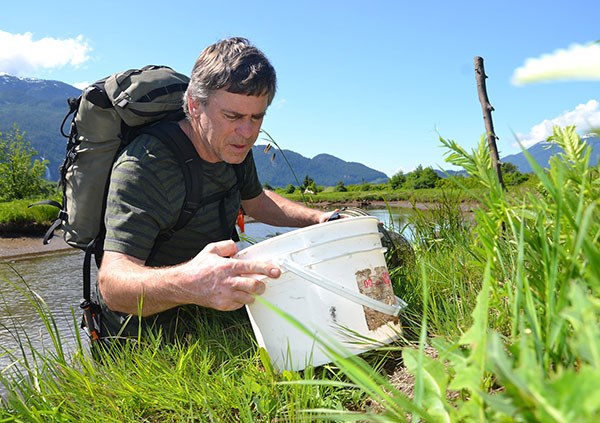District of Squamish officials hope to see some changes in the estuary over the coming months.
Squamish resident John Buchanan rang alarm bells when he noticed habitat alterations in the portion of the estuary that’s enclosed by Third Avenue and the CN Rail tracks to Squamish Terminals. In 1981, floodgates were added to Cattermole Creek, at the east end of the estuary. Since then the area hasn’t seen the tide’s natural flow. As a result, the estuary is being transformed into an upland forest, Buchanan told District of Squamish (DOS) council at Committee of the Whole on Tuesday (June 10).
“Really, there are two ways of killing an estuary; you can cut the water off or fill it in,” Buchanan said.
District staff have been balancing flood protection and environmental needs, municipal engineer David Roulston said. If a high tide is combined with a large inflow of stormwater from downtown, areas around Third and Fourth avenues are at risk of flooding, he said. Even if Bridge Pond, off of Main Street beside the Aqua development, was completely empty of seawater, an extreme rainfall presents a risk of flooding, he noted.
“Heavy rains and high tides creates flooding in downtown,” Roulston reiterated.
As a result, district staff erred on the side of caution, he noted, adding it would be challenging to let tides come in to their maximum levels.
Municipal staff has been examining a “Blue Sky” solution, which would see the floodgates open to allow the tide to come in three feet higher than normal if there were no rain in the forecast for 24 hours. The cost of automating the equipment to carry out the task is estimated at $10,000, Roulston said.
In the long term, staff were eyeing a pump station at Bridge Pond. The equipment would eliminate the need for the floodgates, Roulston noted. In 2004, the price tag for a drainage pump station was estimated to be around $1 million, a figure Roulston anticipates could cost up to $2 million today.
Coun. Patricia Heintzman poked holes in the “Blue Sky” idea. The plan doesn’t seem like enough, she said, noting that instead, staff should leave the floodgates open with the exception of stormy days and extreme high tides.
She made a motion calling for staff to take immediate steps to increase water levels to the area and pursue a strategy to create a healthy estuary.
Council unanimously supported her recommendation.



